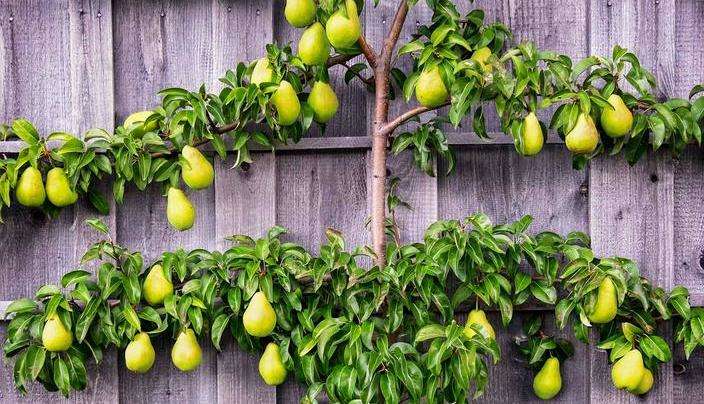
Espalier 101

Train Your Espalier
Espalier is a French word meaning trellis. In the garden, espalier is a method used to train a tree or shrub so trunks and branches grow on one plane.
The espalier method can be applied to various plants ranging from fruit trees, flowering shrubs, and even citrus. There are many benefits to growing a tree or shrub in an espalier form. Home gardeners have the option of purchasing fruit trees and plants already in an espalier form, or training the plant themselves at home.
The espalier method can be applied to various plants ranging from fruit trees, flowering shrubs, and even citrus. There are many benefits to growing a tree or shrub in an espalier form. Home gardeners have the option of purchasing fruit trees and plants already in an espalier form, or training the plant themselves at home.
Benefits of Growing an Espalier
- Allows ample light to reach the plant.
- Allows significant air flow which increases health and reduces diseases.
- You can plant a tree or shrub in a narrow footprint and make the most of your landscape space.
- Espaliers are beautiful!
Two Tier & Three Tier Espalier Systems
- All espaliers need strong and stable support while the plants are still young.
- Our friends at Dave Wilson Nursery utilize these two methods on their fruit trees:
- For multi-grafted fruit trees—meaning there are multiple varieties put onto one tree trunk—they typically use the Three Tier System. This allows more airflow and space for the tree to mature.
- For a single variety espalier, like the ‘Lapin’ Cherry, for example, Dave Wilson Nursery uses a Two Tier System. If there are two branches, they will send one branch north and the other branch south to begin the espalier process.
- Citrus can be trained on either system but a dwarf tree would be recommended for this application.
Specialty System: Belgian Fence Espalier
- This espalier technique is when the branches criss-cross.
- The Belgian Fence is beautiful, but takes extra attention to detail by a gardener who is not afraid to use pruning shears.
Tips for Training and Pruning
- Planting next to a wall or fence is ideal, allowing 6”-12” of space between the plant and the wall. Ensure the wall or fence gets ample sunlight, a minimum of 4-6 hours is recommended for a fruit or citrus tree.
- Generally, espaliers require pruning two times a year: summer and winter. The exception to this rule is for figs, which only require winter pruning due to the sap that bleeds in the summer months. Prune to remove the growth that is not going in the direction that you would like.
- Before planting, set up support by adding wire or wooden stakes.
- If the tree is grafted, you’ll want to be careful not to disturb the graft if you cut lateral branches.
- Plan out the structure of your tree and how you would like to train it. Tie branches to the support structure loosely with green nursery tape, as needed, before you make a cut.
